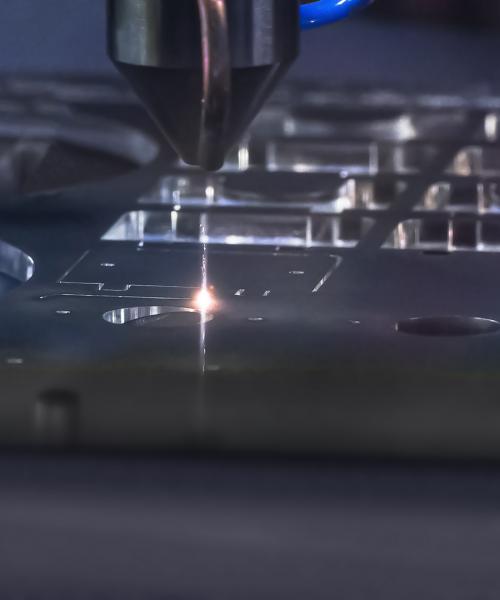Laser marking and laser engraving are two techniques commonly used to personalize objects, create signage, or mark industrial parts. Discover the world of laser marking, how it differs from laser engraving, and what each can achieve.
What is laser marking?
Laser marking is a process of irradiating a material to mark it on the surface with a variable degree of detail.
This technique uses a laser beam to heat a material to its melting point, burning off, discoloring, or melting the top layer - also known as the surface layer.
Laser marking enables the inscription of logos, numbers, QR codes, or even letters on a wide variety of media, products, or objects.

The advantages of laser marking
Laser marking machines combine several advantages from production to results. Its qualities include:
- High precision, ideal for marking small characters and precise patterns, even on delicate materials without damaging them.
- A variety of design possibilities (fading, material removal, bubbles, fine marking, etc.).
- High marking speed.
- Low noise level compared with other marking techniques and machines.
- Zero resource consumption, as laser marking machines use only one light source and require no change of part or consumables for quality marking.

Laser marking
A response to the challenges of industrial traceability
Laser marking is the ideal solution for part and product traceability needs. This technique enables direct, precise marking, even in hard-to-reach areas, where the use of a milling cutter would be complex. Here, the laser marking machine ensures a very rapid marking cycle and enables series' production constraints to be met.
Thanks to one-dimensional (1D) or two-dimensional (2D) codes affixed to parts, it is possible to transmit information throughout the supply chain, aligning with standards set by certain markets.
These applications are common in manufacturing industries such as automotive, aeronautics, and medical, where traceability is essential to guarantee product conformity and safety.
What is laser engraving?
Laser engraving involves vaporizing the material deeply onto the surface to be engraved. This technique uses a powerful laser beam to remove the upper layers of the material by sublimation (from solid to gas).
Depending on the material, laser power, and the amount of material evaporated, engraving depth can vary.
|
What's the difference between raster and vector modes? Laser engraving machines work with graphics files sent to the printer driver linked to the machine to initiate the job. These may be raster or vector engraving files.
|
|---|

The advantages of laser engraving
Though different from marking, laser engraving offers many benefits, some similar to laser marking:
- Precision and finesse in lines and shapes.
- Durability of the result.
- Compatibility with various materials (metals, plastics, organic materials…).
- Zero resource consumption since no solvents, chemicals, or inks are used.
- Speed of execution and time savings due to automated operations that require no intervention or accessories (chisels, punches, etc.).
![[Success Story] Ma Fabrique Perso](/sites/china/files/styles/mobile_component_content_media/public/2024-10/mkt-a-laser-metal-water-bottle-ma-fabrique-perso-menu-light.jpg?h=2075fdba&itok=Kj913xSW)
Laser engraving
for personalization of in-store & e-commerce products
Laser engraving can be used to personalize a wide range of objects:

Laser engraving
and signage creation
Laser engraving is also widely used in signage applications:
- Name signage (business nameplates, badges, information panels, mailbox plates…).
- Event signage (displays, easels, catalog holders, signage…).
- Industrial signage (electrical cabinet labeling, engraving on cables and rigid parts, etc.).
To sum up: what's the difference between laser marking and laser engraving?
While both laser marking and engraving are adaptable to various fields and projects, the main difference lies in the process itself: marking consists of applying information on the surface (codes, logos, etc.), while engraving removes part of the material to create visible, tactile depth.
- Marking is preferred for traceability of industrial parts, where serial numbers or logos are directly affixed, ensuring conformity and identification in the production chain.
- Engraving is particularly suited for precise and durable personalization, as in jewelry or signage to create weather-resistant panels or plaques.
